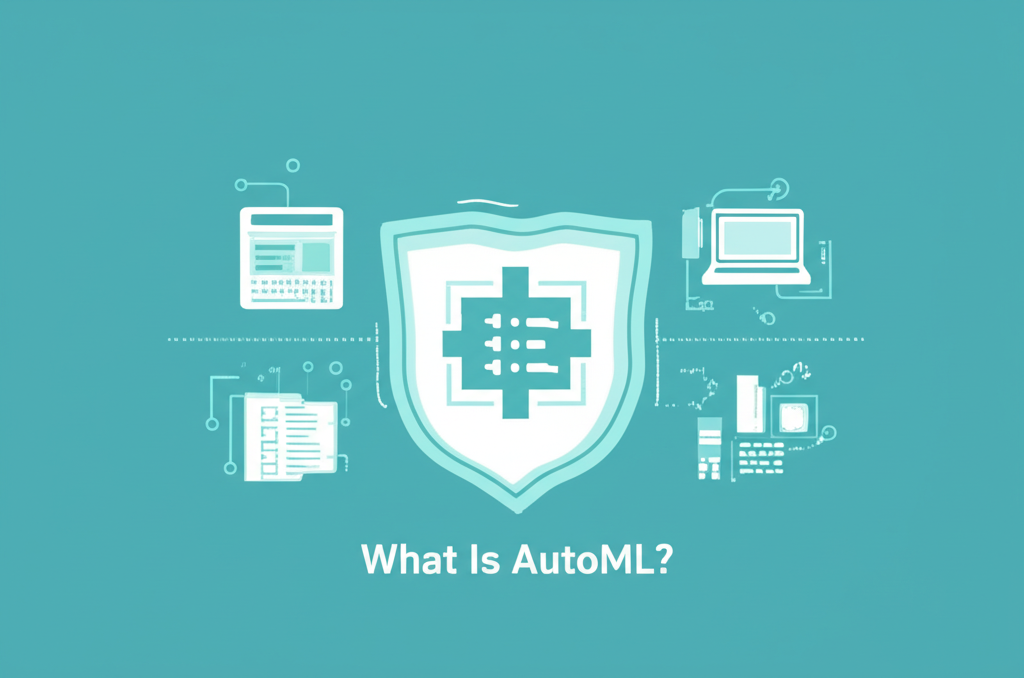Feature Engineering: Turn Raw Data into ML Gold – Complete 2025 Guide
Ever feel like you’re just feeding a beast? You shovel mountains of raw data into your machine learning models, hoping for a miracle, only to get mediocre results. The secret isn’t a more complex algorithm. It’s not about bigger data, either. It’s about better data.
We’ve all been there. Staring at a model with 48% accuracy and wondering where we went wrong. The truth is, most of the magic happens before the model ever sees the data. I’m talking about feature engineering—the art and science of transforming raw, messy data into insightful features that give your model a fighting chance. It’s the difference between a confused algorithm and one that delivers real, measurable impact. This is your guide to becoming the alchemist who turns data dross into ML gold.

Industry Breakthrough: From 48% to 56% with a Few Smart Features
Let’s cut to the chase. A recent DataCamp study showed that by adding just three well-crafted features to a simple model, delivery performance jumped from a dismal 48% to a respectable 56%. That simple act of creativity often crushes complex models that are force-fed junk data. With ML skills now listed in 77% of relevant job postings and entry-level salaries leaping to an average of $152,000 (a stunning $40,000 jump from 2024), mastering this craft isn’t just a good idea—it’s your ticket to the big leagues.
The Real Heart of Machine Learning
Feature engineering is the unsung hero of machine learning. While fancy algorithms get all the headlines, seasoned data scientists will tell you—over a cup of coffee and with a knowing look—that the features you build are what truly make or break a project. This isn’t just about cleaning data; it’s about sculpting it. It’s the creative, strategic process of coaxing meaning from chaos.
The ML landscape is exploding. The market is projected to hit a staggering $503.40 billion by 2030. What does that mean for you? Companies are desperately seeking pros who can do more than just import scikit-learn. They need people who can build the bridge from raw data to real-world results. This guide will show you how to be that bridge-builder.
Table of Contents
- Understanding Feature Engineering: It’s All About the Ingredients
- Core Feature Engineering Techniques: Your Workshop Essentials
- Advanced Feature Engineering Strategies: Beyond the Basics
- Tools and Automation: Your Engineering Toolkit
- Best Practices and Common Pitfalls: Navigating the Minefield
- Real-World Applications: Where the Rubber Meets the Road
- Career Development: Turning Skills into Success
- The Future of Feature Engineering: Man Meets Machine
- Getting Started: Your 30-Day Roadmap
- Frequently Asked Questions
Understanding Feature Engineering: It’s All About the Ingredients
Think of a master chef. They don’t just throw raw ingredients into a pot. They chop, season, marinate, and combine them to create layers of flavor. Feature engineering is the exact same concept for data. You’re the chef, and your job is to prepare the raw data into delectable, informative morsels that your machine learning algorithm can easily digest.
This process is a blend of creativity, domain knowledge, and strategic thinking. It’s about looking at a raw timestamp and seeing not just a string of numbers, but a potential story about “weekend shopping sprees” or “seasonal buying surges.”
Real-World Example: The E-commerce Crystal Ball
Raw Ingredients: A mess of user clicks, product views, and purchase timestamps
Engineered Delights: Features like average_time_between_purchases, seasonal_buying_patterns, and product_category_affinity_scores
The Result: A 23% spike in recommendation accuracy. That’s not just a number; it’s happier customers and a healthier bottom line.
The core difference is simple: raw data is what happened; engineered features are why it might happen again.
Success hinges on three pillars:
1. Relevance: Does this feature actually relate to what you’re trying to predict?
2. Redundancy: Is this feature telling you something new, or is it just echoing another one?
3. Representation: Is it in a format the algorithm can understand?
Get these right, and you’ll build models that sing. Get them wrong, and you’ll be stuck in a cycle of disappointing results.
Core Feature Engineering Techniques: Your Workshop Essentials
Every artisan needs their core set of tools. These are the fundamental techniques that will solve 80% of your problems. Master them, and you’ll be ready for almost anything.
Handling Missing Values: The Art of the Void
Missing data is a classic headache. But hold on—don’t just delete those rows! That’s like throwing away a book because one page is torn. Sometimes, the fact that data is missing is the most valuable signal you have.
Smart Strategies for the Void
Let’s bust a myth: Simply filling in the blanks with the mean or median is often a lazy way out. I once worked on a healthcare dataset where missing lab values didn’t mean the data was lost; it meant the doctor deemed the test unnecessary for that patient. That insight was gold. Creating a binary feature called lab_test_not_performed was infinitely more powerful than imputing a fake value.
Simple Fixes: Mean, median, or mode imputation (use with caution!).
Smarter Fixes: KNN or iterative imputation that uses other features to predict the missing one.
The Real Pro Move: Create “missingness indicators”—binary flags that tell the model when a value was missing.
Domain-Driven Logic: Use business rules. If a customer’s “last_complaint_date” is missing, it might mean they’ve never complained. That’s a feature!
Categorical Variable Encoding: Finding the Right Key for the Lock
Algorithms speak in numbers, not words. So what do you do with categories like “City,” “Product Type,” or “Customer Segment”? You encode them. But choosing the right encoding method is like picking the right key for a lock—the wrong one gets you nowhere.
One-Hot Encoding
Your trusty skeleton key. Best for variables with just a few categories (like “Yes/No/Maybe”). It creates a simple on/off switch for each option.
Caveat: Use this on a variable with 500 categories, and you’ve just created 500 new columns, leading to a bloated, unwieldy dataset.
Target Encoding
Clever, but dangerous. It replaces each category with the average target value for that category. It’s powerful but like handling nitroglycerin.
Caveat: You have to use careful cross-validation to prevent the model from “cheating” by peeking at the answers (a.k.a. data leakage).
Embedding Encoding
The deep learning approach. It learns a dense vector representation for each category, capturing semantic relationships. Think of it as giving each category a coordinate in a multi-dimensional “meaning space.”
Caveat: It needs a lot of data to work its magic.
Numerical Feature Transformation: Reshaping for Success
Not all numerical data is created equal. Some algorithms are sensitive old souls; they get thrown off by skewed distributions or features on wildly different scales. Your job is to make them comfortable.
A Quick Guide to Reshaping
Skewed Data? Use a log, square root, or Box-Cox transformation to pull in the long tail and make it look more like a classic bell curve.
Varying Scales? Use StandardScaler to give every feature a similar range, which is crucial for algorithms like SVMs and neural networks.
Pesky Outliers? RobustScaler is your friend. It uses medians and quartiles, making it resistant to those extreme values that can throw off your model.
Creating Interaction Features: When 1 + 1 = 3
This is where the real creativity kicks in. Interaction features are born from combining two or more existing features, revealing relationships that were invisible before. They are often the secret sauce behind top-performing models.

A Classic Success Story: In a fraud detection model, the features transaction_amount and time_of_day were moderately useful on their own. But when combined into a new feature—large_transaction_off_hours—it became the single most predictive signal in the entire model. It flagged something highly specific and suspicious. This one feature boosted fraud detection rates by 15%. That’s the power of synergy.
Advanced Feature Engineering Strategies: Beyond the Basics
Ready to move from the workshop to the R&D lab? These advanced strategies are what separate the journeyman from the master. They require more domain knowledge but unlock incredible predictive power.
Time-Based Features: Reading the Data’s Diary
Time is more than just a timestamp. It’s a rich tapestry of cycles, trends, and events. To truly understand temporal data, you need to think like a historian, not just a timekeeper.
Unlocking Time’s Secrets
Cyclical Patterns: Don’t just use “Monday, Tuesday.” Convert the day of the week into sine/cosine features so the model understands that Sunday is close to Monday. This helps it learn weekly patterns seamlessly.
Lag Features & Rolling Averages: What happened yesterday? What was the average over the last 7 days? These features give the model a sense of momentum and recent history.
Time Since Events: How long has it been since a customer’s last purchase? Or since they opened their account? This captures lifecycle and engagement dynamics.
Holiday & Seasonal Effects: Is it Black Friday? A long weekend? These event-based features are often massive drivers of behavior.
Text and NLP Features: Giving Words Meaning
Text is a treasure trove of information, but it’s notoriously tricky. Modern approaches blend the old with the new to squeeze every drop of insight from unstructured text.
The Old Guard (TF-IDF, n-grams)
Fast, interpretable, and great for capturing word frequency and basic phrases. They’re like looking at a word cloud—you get the gist, but you miss the nuance.
The New Wave (BERT, Embeddings)
These are the heavy hitters. They don’t just count words; they understand context. The downside? They are computationally expensive and can be a black box.
The Unique Insight: The future isn’t about choosing one over the other. The most powerful models I’ve built often use a hybrid approach—TF-IDF features to capture keyword importance alongside BERT embeddings to capture semantic meaning. You get the best of both worlds.
Domain-Specific Feature Creation: Your Secret Weapon
This is it. This is the one thing that automated tools can’t replicate. Your industry knowledge allows you to create features that are pure genius. It’s the difference between a generic model and a bespoke masterpiece.
A Healthcare Epiphany
A model trying to predict kidney disease was performing okay using raw lab values like creatinine levels. But a data scientist with clinical knowledge knew that doctors don’t just look at creatinine—they combine it with age and gender to calculate the “estimated Glomerular Filtration Rate” (eGFR). By engineering this single, clinically meaningful feature, the model’s accuracy shot up. It wasn’t just a better feature; it was the right feature.
Tools and Automation: Your Engineering Toolkit
The right tools don’t just make the job easier; they make new things possible. The modern feature engineering ecosystem offers a spectrum of options, from hands-on manual control to “push-button” automation.
The Python Ecosystem: The de facto Standard
Python is the undisputed king of data science, and its libraries are the crown jewels. You’ll likely spend most of your time with these three:
Pandas
Your digital Swiss Army knife. It’s perfect for the messy, exploratory phase of slicing, dicing, and manipulating your data. Its flexibility is its greatest strength.
Scikit-learn
The factory floor for machine learning. It provides standardized, production-ready tools for preprocessing and building pipelines. Its Pipeline object is a godsend for consistency.
Featuretools
The brainstorming assistant. This library performs “deep feature synthesis,” automatically creating hundreds of candidate features from relational datasets. Fantastic for finding non-obvious relationships.
Automated Feature Engineering: A Word of Caution
AutoML frameworks promise to make feature engineering obsolete. Don’t believe the hype.
A counterpoint: Don’t let the shiny toy of AutoML make you lazy. It’s a powerful assistant, not a replacement for your brain. Actually, thinking about it more, it’s not about laziness. It’s about intelligently augmenting your workflow. Use automation to handle the brute-force search for interactions, freeing up your mental energy to focus on the creative, domain-driven features that provide a real competitive edge.
The newest frontier is the LLM-FE framework, which uses Large Language Models to suggest features based on their vast “world knowledge.” It’s an exciting development that points to a future of human-AI collaboration.
Feature Engineering Pipelines: Building for Production
In the lab, a messy Jupyter notebook might be fine. In production, it’s a recipe for disaster. Robust MLOps practices demand pipelines that are reproducible, scalable, and monitored.
A Pro’s Checklist for Production Pipelines
Version Everything: Your code, your data schemas, everything.
Test Religiously: Unit tests for your feature logic are non-negotiable.
Monitor for Drift: Is the data coming in today the same as the data you trained on a month ago? You need to know.
Plan for Scale: Will this work when you have 100x the data?
Have a Rollback Plan: Because sometimes, even the best features fail in the wild.
Ready to Build Professional ML Infrastructure?
Deploy your feature engineering pipelines on reliable cloud infrastructure. DigitalOcean provides affordable, scalable hosting perfect for ML workloads.
Start Your Cloud JourneyBest Practices and Common Pitfalls: Navigating the Minefield
Creativity is essential, but it needs to be disciplined. Following best practices and being aware of common traps will save you from headaches and failed projects.
Preventing Data Leakage: Don’t Contaminate the Crime Scene
Data leakage is the cardinal sin of machine learning. It’s when your training data accidentally contains information about the target that won’t be available when you make a prediction in the real world. It’s like letting your model study the answer key before the test. The result? A model that looks brilliant in development and falls flat on its face in production.
The Golden Rules to Avoid Leakage:
• Respect Time: Never use future information to predict the past.
• Split First: Always split your data into training and test sets before doing any feature engineering.
• Beware of Targets: Be extra careful with any encoding that uses the target variable.
• Think Production: Ask yourself: “Would I have this exact piece of information at the moment of prediction?”
Feature Selection: Pruning the Garden
Creating features is the expansion phase. Selecting them is the contraction phase. You need both. Throwing hundreds of features at a model can lead to overfitting, slow training times, and a model that’s impossible to explain.
Statistical Methods (The Quant Approach)
Use algorithms like recursive feature elimination or measures like mutual information to let the data tell you which features are most important. It’s objective and scalable.
Domain-Driven Selection (The Expert Approach)
Use your business knowledge to hand-pick the features that make the most sense. This is crucial in regulated fields where every feature needs to be explainable. The best data scientists blend both.
Balancing Interpretability and Performance: The Eternal Trade-Off
Sometimes the most predictive features are the most complex and opaque. Do you want a model you can explain, or one that gets the highest score? The answer depends entirely on the context.
A Strategic Framework
High-Stakes Decisions (e.g., Loan Approval, Medical Diagnosis): Interpretability is king. You need a clear audit trail. Stick to simpler, more explainable features. The ethical implications here are enormous.
Performance-Critical Applications (e.g., Ad Bidding, Recommendation Engines): Go for performance. Complex, black-box features are fine as long as you can validate their impact through rigorous A/B testing.
Real-World Applications: Where the Rubber Meets the Road
Theory is nice, but impact is what matters. Let’s look at how brilliant feature engineering drives real business value.
E-commerce: Beyond the Shopping Cart
A major online retailer boosted their recommendation accuracy by a whopping 23%. How? They stopped thinking about users and products in isolation and started engineering features about their relationship.
The Strategy: They created product_affinity_scores by combining a user’s Browse history with product category data. They layered in temporal features for seasonal buying and even interaction terms between user demographics and price points.
The Payoff: A 23% better click-through rate and a 15% jump in conversions. This wasn’t a science project; it translated to an estimated $2.3 million in annual revenue.
Healthcare: Engineering for Better Diagnoses
A groundbreaking study in Nature showed how multi-modal feature engineering could dramatically improve medical predictions.
Multi-Modal Healthcare Feature Engineering
The Challenge: How do you combine lab results, doctor’s notes (text), and medical images into one cohesive model?
The Solution: They built composite risk scores from multiple lab values, extracted temporal patterns from vital signs (e.g., “rate of change in blood pressure”), and used domain-specific NLP to pull structured features from unstructured clinical notes.
The Result: An 18% improvement in diagnostic accuracy. That’s a life-changing number.
Finance: Outsmarting the Fraudsters
In the cat-and-mouse game of fraud detection, feature engineering is the primary weapon. It’s all about finding signals of abnormal behavior in a sea of transactions.
Temporal Aggregations
Features like transaction_count_last_hour are killer at spotting unusual velocity.
Impact: 40% reduction in false positives
Network Features
Linking transactions by device ID or IP address to spot organized fraud rings.
Impact: 25% improvement in detection rate
Behavioral Profiles
Is this purchase wildly out of character for their normal spending habits?
Impact: 30% faster fraud identification
Career Development: Turning Skills into Success
Mastering feature engineering isn’t just an academic exercise; it’s a career accelerator. With entry-level ML salaries hitting $152,000, developing this skill is one of the highest-leverage investments you can make.
The Modern Feature Engineer’s Skillset
The best practitioners are “T-shaped”—they have deep technical expertise (the vertical bar of the T) and broad knowledge of business and domain context (the horizontal bar).
Your Technical Skill Tree
Foundation: Python, pandas, and a solid grasp of statistics.
Intermediate: Building scikit-learn pipelines, understanding various feature selection methods.
Advanced: Writing your own custom transformers, using automated tools strategically.
Expert: Pioneering novel features for a specific domain.
The Salary Landscape in 2025
A significant chunk (32%) of data science jobs now falls in the $160k-$200k range. And here’s a twist: New York has edged out California for the top spot. But the big takeaway is that domain experts are in high demand, with nearly 58% of job postings preferring a specialist over a generalist.
Building a Portfolio That Gets Noticed
Don’t just say you can do feature engineering—prove it. Build a portfolio that tells a story of impact. Focus on projects that showcase your ability to improve model performance through thoughtful feature engineering.
Project Idea: Take a well-known Kaggle competition. First, build a baseline model with minimal feature engineering. Then, create a second version where you go deep on feature creation. Document the process and quantify the lift. That’s a story recruiters want to hear.
Organize Your Feature Engineering Projects Professionally
Showcase your portfolio and manage complex ML projects with professional project management tools.
Streamline Your WorkflowThe Future of Feature Engineering: Man Meets Machine
Where is this all headed? The future is less about full automation and more about intelligent collaboration.
LLMs as Your Co-Pilot
The rise of LLM-powered feature discovery is fascinating. Imagine telling a model, “I’m trying to predict customer churn for a SaaS company,” and having it suggest features like days_since_last_login, feature_adoption_rate, and number_of_support_tickets. It can act as a creative partner, helping you brainstorm possibilities grounded in its vast knowledge.
The Human-AI Partnership
AI’s Role: The tireless analyst. It can generate thousands of candidate features, test them, and find complex patterns.
Your Role: The strategist and domain expert. You guide the process, inject creativity, ask “why,” and ensure the features make business sense.
The trend is clear: as data gets more complex, the need for domain-specific expertise will only grow. The tools will get better, but they’ll be in service of the expert, not a replacement for them.
Getting Started: Your 30-Day Roadmap
Ready to dive in? Here’s a structured plan to get you from zero to hero.
Your 30-Day Learning Path
Week 1: The Foundation.
• Get comfortable with pandas. Practice handling missing values and basic categorical encoding.
Week 2: The Core Toolkit.
• Build your first scikit-learn pipeline. Experiment with scaling and creating interaction features.
Week 3: Advanced Techniques.
• Tackle a time-series dataset. Extract features from text. Practice feature selection.
Week 4: The Capstone Project.
• Take a project from start to finish. Compare your manual features against an automated tool. Document your findings.
Practice Makes Perfect
Get your hands dirty with real data. Start with well-documented datasets that allow comparison with established benchmarks.
Beginner Projects
Titanic, House Prices
Focus: Basic techniques, clear documentation
Intermediate Projects
Customer Churn, Fraud Detection
Focus: Business context, performance improvement
Advanced Projects
Time Series Forecasting, NLP
Focus: Domain expertise, novel techniques
Accelerate Your Learning Journey
Access comprehensive feature engineering courses and build your expertise with structured learning paths.
Explore Learning PlatformsFrequently Asked Questions
Your Journey Starts Now: With machine learning skills demanded in 77% of job postings and salaries soaring, mastering feature engineering places you right at the epicenter of the data revolution. Every dataset is a story waiting to be told. Feature engineering is how you give that story a voice. It’s your tool for helping algorithms understand the narrative and turn it into action. Go find the story.






Leave a Reply